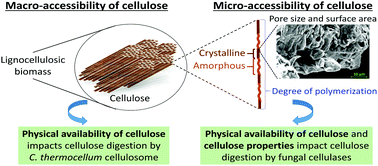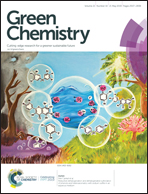Cellulose hydrolysis by Clostridium thermocellum is agnostic to substrate structural properties in contrast to fungal cellulases
Abstract
The native recalcitrance of lignocellulosic biomass hinders its effective deconstruction for biological conversion to fuel ethanol. However, once cellulose is physically available to enzymes/microbes, i.e., macro-accessible, cellulose micro-accessibility, i.e., the accessibility as influenced by cellulose properties, further affects cellulose conversion. Here, we performed a comparative study of the effect of cellulose micro-accessibility on cellulose conversion by two biological approaches of potential commercial interest: consolidated bioprocessing (CBP) using Clostridium thermocellum and cell-free saccharification mediated by fungal enzymes. Commercially available cellulosic substrates, Avicel® PH-101, Sigmacell Cellulose Type 50, cotton linters, Whatman™ 1 milled filter paper, and α-cellulose were employed to constitute different cellulose micro-accessibilities. Physiochemical characterization was performed on these substrates to determine key morphological and chemical differences. Biological conversion of these substrates showed that C. thermocellum was unaffected overall by cellulose structural properties, i.e., micro-accessibility, and achieved similar solids solubilization and metabolite production from these structurally different materials. However, fungal enzymes digested these substrates to different extents. Specifically, glucan conversion of these substrates diminished in the following order: milled filter paper > Avicel > Sigmacell and α-cellulose > cotton linters. Here, we propose that C. thermocellum digestion of lignocellulosic biomass is primarily controlled by the physical availability of cellulose in the lignocellulosic matrix and largely unaffected by cellulose properties once cellulose is made macro-accessible. In contrast, fungal enzymes require cellulose to be physically accessible, i.e., macro-accessible, as well as have properties amenable to digestion, i.e., micro-accessible.



 Please wait while we load your content...
Please wait while we load your content...